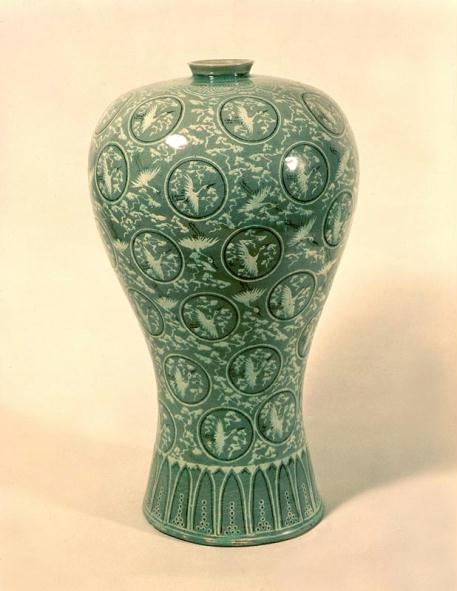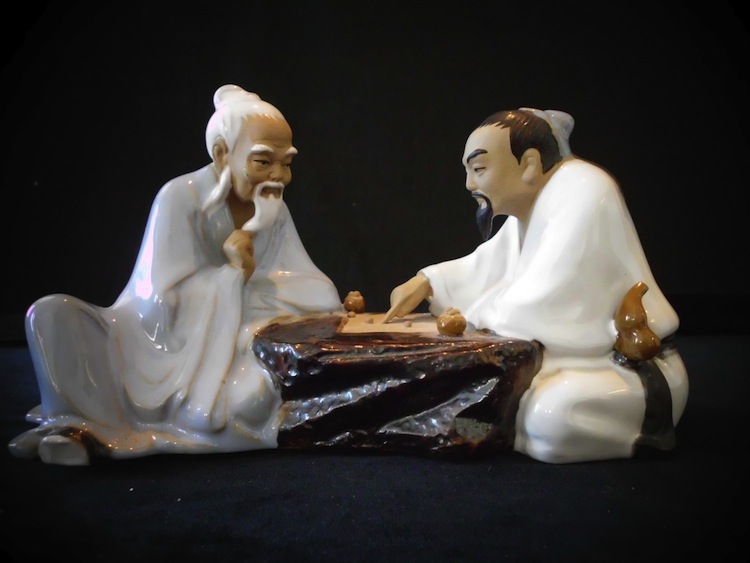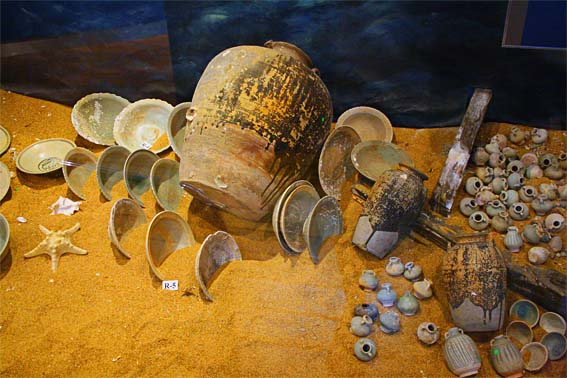One of the first steps in determining the age of Chinese porcelain is to look at the bottom of the piece and read the reign marks. Needless to say, there are other important criteria to determine the actual age and the authenticity of an antique porcelain, since nothing is easier that to write an old date on the bottom of a vase that came out of the kiln last month. It is still important to be able to recognize these marks.
Reign periods, or nianhao, constitute a basic unit of the Chinese calendar. Traditionally, dates are given as year XX of the YY reign period. The third year of the Yongzheng period is 1725, since the first year was in 1723 when the Yongzheng Emperor began his rule. The name of a nianhao is actually an auspicious title or slogan chosen to indicate and support a political direction. Originally, emperors could have several such titles during their years on the throne, changing them when a new direction was instituted.
Starting from the Ming dynasty, however, the custom of picking new titles disappeared and each emperor used a single nianhao during the entire span of his reign. When a new emperor ascended the throne, they picked a new title. As a result, the reign titles became associated with, and designate, the ruler. So when we talk about the Qianlong Emperor then, although “Qianlong” is actually not the emperor’s name but a title chosen at the beginning of his rule, it is perfectly clear who we mean by that designation.
The marks on Chinese porcelain typically consist of four or six characters, the last two being “nian zhi”, i.e. “made during the years of”. The style of the characters can be either “kai” form or seal script. Seal script was favored especially during the years of the Qianlong and Jiaqing emperors. Below are some examples of reign marks taken from actual pieces of Chinese porcelain, arranged in chronological order.
Xuande (1426-1435)


Transcription: Da Ming Xuande nian zhi
Translation: Made during the Xuande reign of the Great Ming dynasty
Yongle (1403-1425)

Transcription: Yongle nian zhi
Translation: Made during the Yongle reign
This inscription does not say the name of the dynasty, but we know that the Yongle period was during the Ming dynasty.
Chenghua (1465-1488)


Transcription: Da Ming Chenghua nian zhi
Translation: Made during the Chenghua reign of the Great Ming dynasty
Chongzhen (1628-1644)

Transcription: Da Ming Chongzhen nian zhi
Translation: Made during the Chongzhen reign of the Great Ming dynasty
Yongzheng (1723-1736)



Transcription: Da Qing Yongzheng nian zhi
Translation: Made during the Yongzheng reign of the Great Qing dynasty

Transcription: Yongzheng nian zhi
Translation: Made during the Yongzheng reign
This last mark differs from the others above because it does not include the name of the dynasty.
Qianlong (1736-1796)






Transcription: Da Qing Qianlong nian zhi
Translation: Made during the Qianlong reign of the Great Qing dynasty
These are by far the most common marks on Chinese anqtiques. The Qianlong Emperor was a great connoisseur of art who was himself actively involved in painting, writing poems and essays, doing calligraphy etc. The 60 years of his rule was a golden age of Chinese art.

Transcription: Qianlong yu zhi
Translation: Made for Qianlong Emperor
This last mark specifically states that the procelain was made for the imperial household.
Jiaqing (1796-1821)

Transcription: Da Qing Jiaqing nian zhi
Translation: Made during the Jiaqing reign of the Great Qing dynasty
Guangxu (1975-1909)


Transcription: Da Qing Guangxu nian zhi
Translation: Made during the Guangxu reign of the Great Qing dynasty











